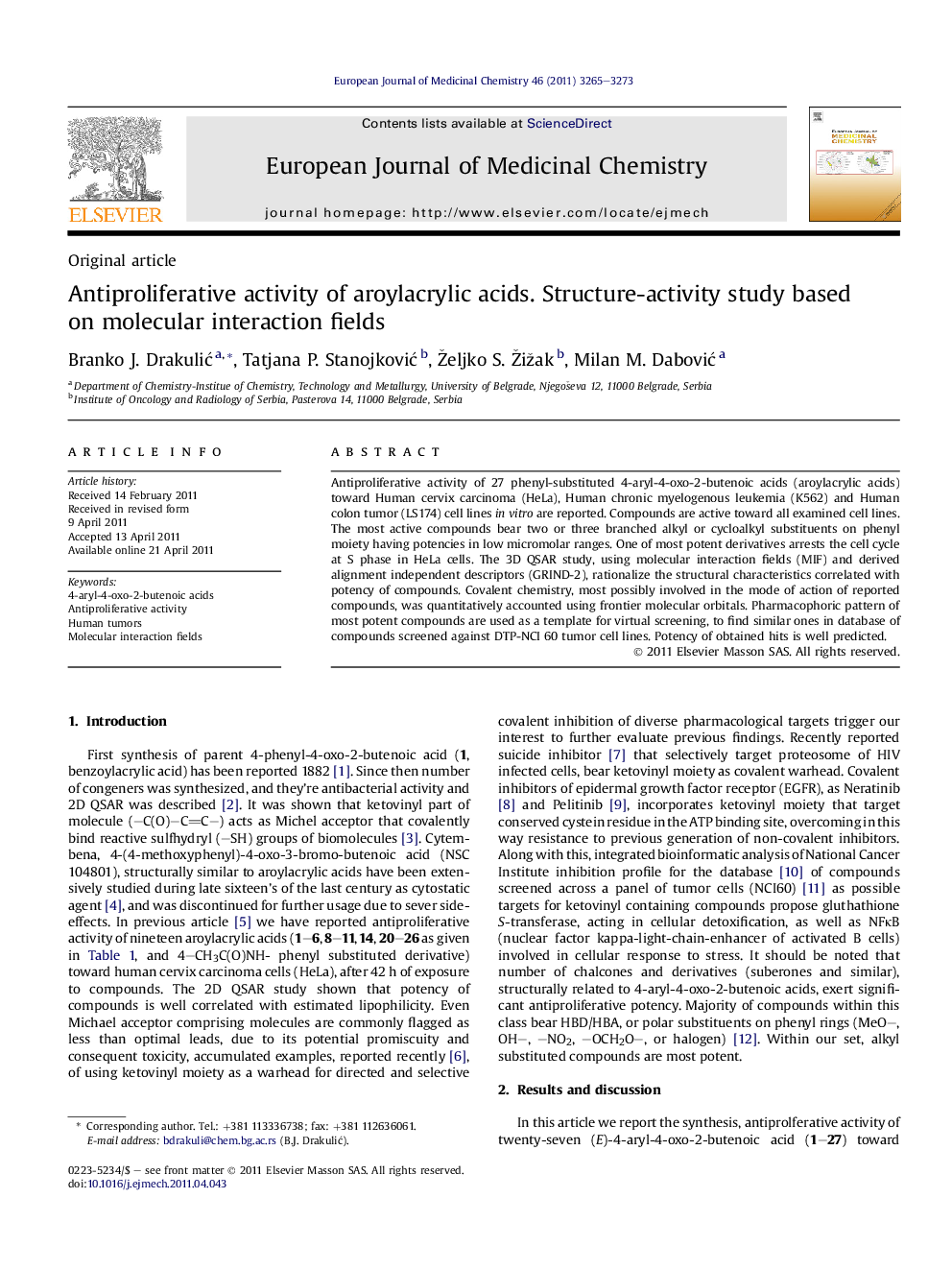| Article ID | Journal | Published Year | Pages | File Type |
|---|---|---|---|---|
| 1394602 | European Journal of Medicinal Chemistry | 2011 | 9 Pages |
Antiproliferative activity of 27 phenyl-substituted 4-aryl-4-oxo-2-butenoic acids (aroylacrylic acids) toward Human cervix carcinoma (HeLa), Human chronic myelogenous leukemia (K562) and Human colon tumor (LS174) cell lines in vitro are reported. Compounds are active toward all examined cell lines. The most active compounds bear two or three branched alkyl or cycloalkyl substituents on phenyl moiety having potencies in low micromolar ranges. One of most potent derivatives arrests the cell cycle at S phase in HeLa cells. The 3D QSAR study, using molecular interaction fields (MIF) and derived alignment independent descriptors (GRIND-2), rationalize the structural characteristics correlated with potency of compounds. Covalent chemistry, most possibly involved in the mode of action of reported compounds, was quantitatively accounted using frontier molecular orbitals. Pharmacophoric pattern of most potent compounds are used as a template for virtual screening, to find similar ones in database of compounds screened against DTP-NCI 60 tumor cell lines. Potency of obtained hits is well predicted.
Graphical abstractFigure optionsDownload full-size imageDownload as PowerPoint slideHighlights► Aroylacrylic acids exert antiproliferative activity to human tumor cells in vitro. ► Simple variation of substitution pattern on phenyl ring increase potency from 96 to 1.3 μM. ► Molecular interaction fields (MIF) - based 3D QSAR rationalize pharmacophoric pattern needed for high potency. ► “Covalent chemistry” accounted via frontier molecular orbitals. ► MIF - based virtual screening find compounds similar by pharmocophoric pattern in NCI-DTP database.
